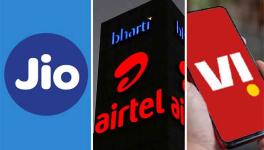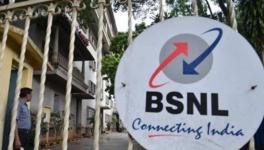The 2G Scam: Arithmetic According to Kapil Sibal
Kapil Sibal has now thought fit not only to pick up all the arguments given by A. Raja for giving 2G license and spectrum at throw-away prices to favoured corporates houses, but has also added a few of his own.
Thus, if Unitech and Swan made thousands of crores by selling a part of their equity within months of securing the 2G licenses, we should not complain as this somehow has also helped the consumer. Further, according to the Minister, the CAG is entirely devoid of arithmetic – it cannot distinguish between 1.76 lakh crore and the number zero; if it only knew its numbers – according to Kapil Sibal -- they would have known that the exchequer has really suffered no loss. In other words, there was no scam, no undervaluation of the spectrum and no loss to the exchequer, only some minor procedural lapses.
Some of the arguments produced by Sibal are not new. Raja had been advancing them ad naseum and they have been refuted a number of times. It is unfortunate that with a new Minister of Telecom, we now have to refute them once again. But some of Sibal's arguments are novel, particularly his arithmetic and therefore does call for new refutation. Let us take them first.
In his arithmetic attack on the CAG, Sibal starts by saying that CAG used the 3G license prices which were auctioned in 2010, ergo it cannot be used for 2008, when the 2G licenses were awarded.
It is interesting that Sibal is arguing that 2010 prices cannot be used for 2008 as the value of money has changed in this two years, as also the subscriber base and the annual revenue. However, he seems to have no such problem in arguing that 2001 license prices be used for 2008. This, is in spite of there being only 4 million cellular subscribers in 2001 as against a 75 times increase in subscriber base by 2008 and a 7 year gap!
The CAG computed the loss by estimating the market price of the 2G spectrum. This market price was estimated in different ways – by the offer of S Tel for a pan-India license, the sale of equity by Unitech, and Tata Teleservices and by comparing it to the 3G auction price. This gave the figures of Rs. 57,600 crore to 1.76 lakh crore -- depending on the method adopted. The reason that CAG did not differentiate between 2010 and 2008 prices is quite simple – the market prices in 2007 and early 2008 would have been higher than 2010 as the financial crash took place later and the markets had not fully recovered even in 2010.
CAG also stated that an alternate method would have been to choose econometric models for projecting the 2001 prices to 2008 and then computing the losses. It chose the market prices as the basis because it felt that this was a better indicator than projecting the 2001 prices to 2008. Incidentally, the methodology that Sibal is suggesting of using time value of money and increase of subscriber base and revenue would be a form of econometric model exercise. Though CAG did not do this, TRAI has done this exercise. In its Recommendations on Spectrum Management and Licensing Framework dated11th May, 2010, TRAI estimated the price of license in 2009 using just the time vale of money. With a standard discounted cash flow, TRAI calculated that based on a 15% discounting rate, the 2001 price of 1658 crore would have been worth 5074 crore. Taking the Adjusted Growth Rate per MHz, TRAI also computed a figure of 8,285 crore for the 2G license or 5 times the amount that the Government collected. If indeed Sibal felt that this was a better method to compute loss to the exchequer, why did he not suggest any of these figures for computing the loss? Why claim that actually, there has been no undervaluation of the spectrum at all?
TRAI however, like CAG, finally suggested using the 3G license fee price for fixing all future license fees. The reason given was the same as CAG – this is the price discovered through a market mechanism and is a better indicator of price.
Sibal has argued that the efficiency of 3G spectrum is more than 2G spectrum and as it will be used for high value added services, it should have a different price. This is the same as Raja's BPL rice as 2G and basmati rice as 3G. In its 11th May recommendations, clauses 3.80 to 3.82, TRAI has discussed this in great details. It has analysed why the efficiency of the 2G and 3G spectrum is not very different and has shown that that 2G spectrum should really be regarded as 2.75G with current technologies in terms of efficiency. It has also pointed out that it is not just efficiency of the spectrum but also the size of the market and supply-demand position that determines the price of the spectrum. Obviously, the existing voice market is much the larger market and will be a major determinant in deciding the price of the spectrum. Taking all this into account, TRAI's recommendations were:
The Authority, therefore, recommends that the 3G prices be adopted as the ‘Current price’ of spectrum in the 1800 MHz band.
(Clause 3.82, page 189, Recommendations on Spectrum Management and Licensing Framework dated11th May, 2010)
The last point that Sibal raised was with respect to the quantum of frequency allotted to the new 2G licensees. He claimed that since only 4.4 MHz has been given as start-up frequency to new 2G licensees, therefore the amount computed as loss should not have been based on 6.2 MHz as CAG has done. Unfortunately for Sibal, he himself has queered his case by stating that additional charges for spectrum will be levied only beyond 6.2 MHz. Obviously, the contracted amount – as per the 2G license -- is 6.2 MHz, even though only 4.4 MHz is being given initially.
TRAI in its recommendations of 11th May quoted above has also dealt with this issue. In its Executive Summary, it notes “After due examination of the provisions of licences issued from time to time and related factors, the Authority concludes that the committed spectrum is 6.2 MHz in respect of GSM and 5 MHz in respect of CDMA”.
The argument that the consumers have benefited from the low license fees is factually untrue. If the companies receiving the licenses had not resold it to others (what DoT now calls “dilution of equity”) at 6/7 times the price that it had itself bought the licenses, there might have been some merit in this argument. However, once sale of equity was allowed by Raja by changing the Merger and Acquisitions Guideline, all that has happened that instead of a public auction held by DoT, the licensees have held private auctions. The impact on the consumer is same, irrespective on who has held the auction.
This is one of the points that the Left had brought repeatedly – that if keeping the price to the consumer low was the objective, there should have been a lock-in so that buyers cannot buy cheap and dear by holding private auctions. Instead of a lock-in, even the existing guidelines on M&A and the TRAI recommendations of not allowing any change of equity before the roll-out obligations are met, were changed by the then Telecom Minister, A Raja.
The issue of which corporate house was favoured over which one is certainly important but not the major part of the 2G scam. The key issue is that a scarce national resource was given away at a fraction of the price. No amount of arithmetic jugglery can take away this simple fact. The reason that Sibal is unwilling to accept this is equally simple. Making a gift of natural resources – from spectrum to mineral wealth -- to the capitalist class is the hall mark of this neo-liebral order. This is what Sibal wants to continue.
The neo-liberal order in India has been different from, for example, the regime of Hugo Chazez in Venezula and Lula in Brazil in the way it has used its natural resources. In Venezuela and Brazil, the oil wealth of the country was used to make large scale resource transfers to the poor and building up a social infrastructure. In India, the mineral, oil and other resources like spectrum are being looted by big business with full co-operation of the Government.
While people in the country are highly exercised by the colossal nature of all these scams and would like the Government Ministers and bureaucrats who are a party to the loot be brought to book, the question is which class benefits from such scams? Obviously, giving away natural resources cheap is nothing but a huge subsidy to the rich or the capitalist class. What we are now seeing is the use of natural resources not to develop the country's economy but exclusively to develop the capitalist class. This is why a Sibal is not willing to accept that there is a loss by giving away spectrum. Procedural lapses yes, recovery of the loss from the capitalist class is a big no, even if the rules of arithmetic have to be changed. This is the Manmohan Singh's path of development for the Indian economy. Subsidise the rich and tax the poor – the mantra of this Government.
Get the latest reports & analysis with people's perspective on Protests, movements & deep analytical videos, discussions of the current affairs in your Telegram app. Subscribe to NewsClick's Telegram channel & get Real-Time updates on stories, as they get published on our website.
























